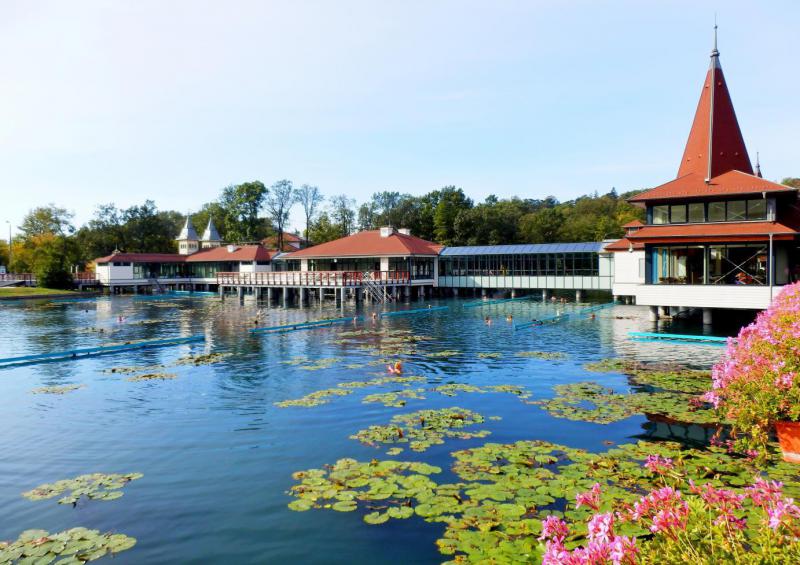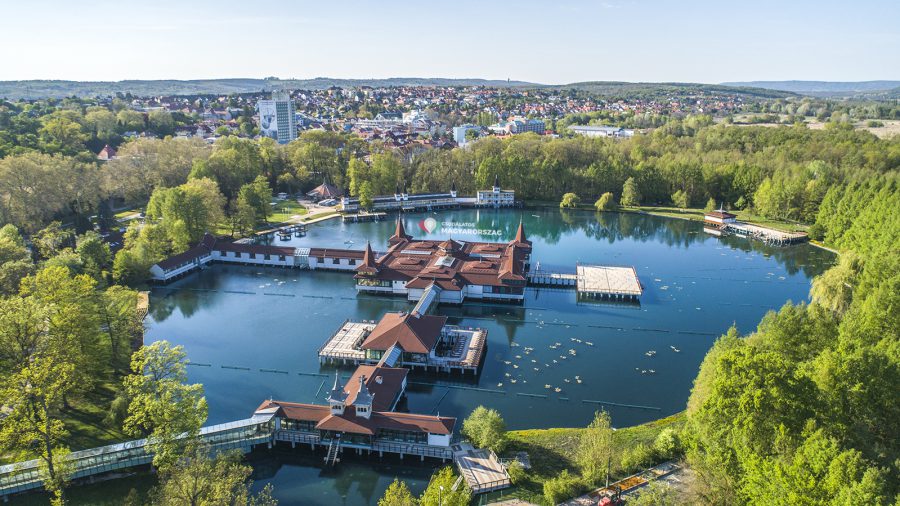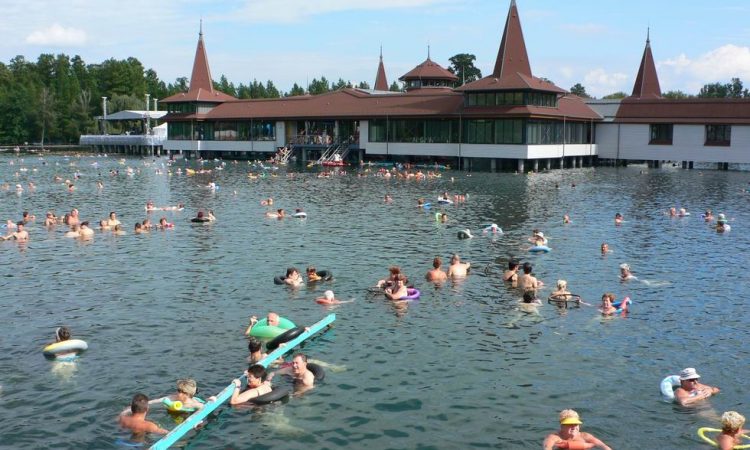Hévíz
Hévíz is located in the eastern part of Zala County, in the northwestern neighborhood of Keszthely, the county seat is only 35 km from Zalaegerszeg and barely 10 km from Balaton.
The role of the Hévíz tő as a bathing place goes back to prehistoric times. Its healing effect was already known by the Romans, as evidenced by the coins collected from the lake by divers in the early 1980s, and the altar stone found around the lake. Findings from the time of migration also show that the Germanic and Slavic population who moved there also used the lake. Hévíz was mentioned for the first time in a document from 1328.
It became a spa in the middle of the 18th century, when the spring and its surroundings became the property of the Festetics family, who played an important role in the establishment of the spa. A spa complex was created next to the lake, which was initially used mainly by the local population, but word soon spread about the miraculous effect of the water and more and more patients who wanted to be cured came. The flourishing of spa life is mainly due to Count György Festetics.
In 1905, the Festetics family leased the existing spa to Vencel Reischl, a brewer from Keszthely, whose ideas gave it its current form between 1904 and 1928.
The Hévíz State Spa Hospital was founded after the Second World War. The indoor spa was completed in 1968, the most modern therapy center in Hungary at the time, which made it possible to take a spa bath regardless of the season. Thus, Hévíz became the country's largest and most important healing spa, where rheumatic and locomotor diseases are primarily treated.
Hévíz received the title of a city on May 1, 1992. It is deservedly one of the most beautiful cities in the country, which is demonstrated by nothing better than the fact that in 1997 the movement "For a Flowering Hungary" won the first prize and in 1998 the second prize in Europe.





